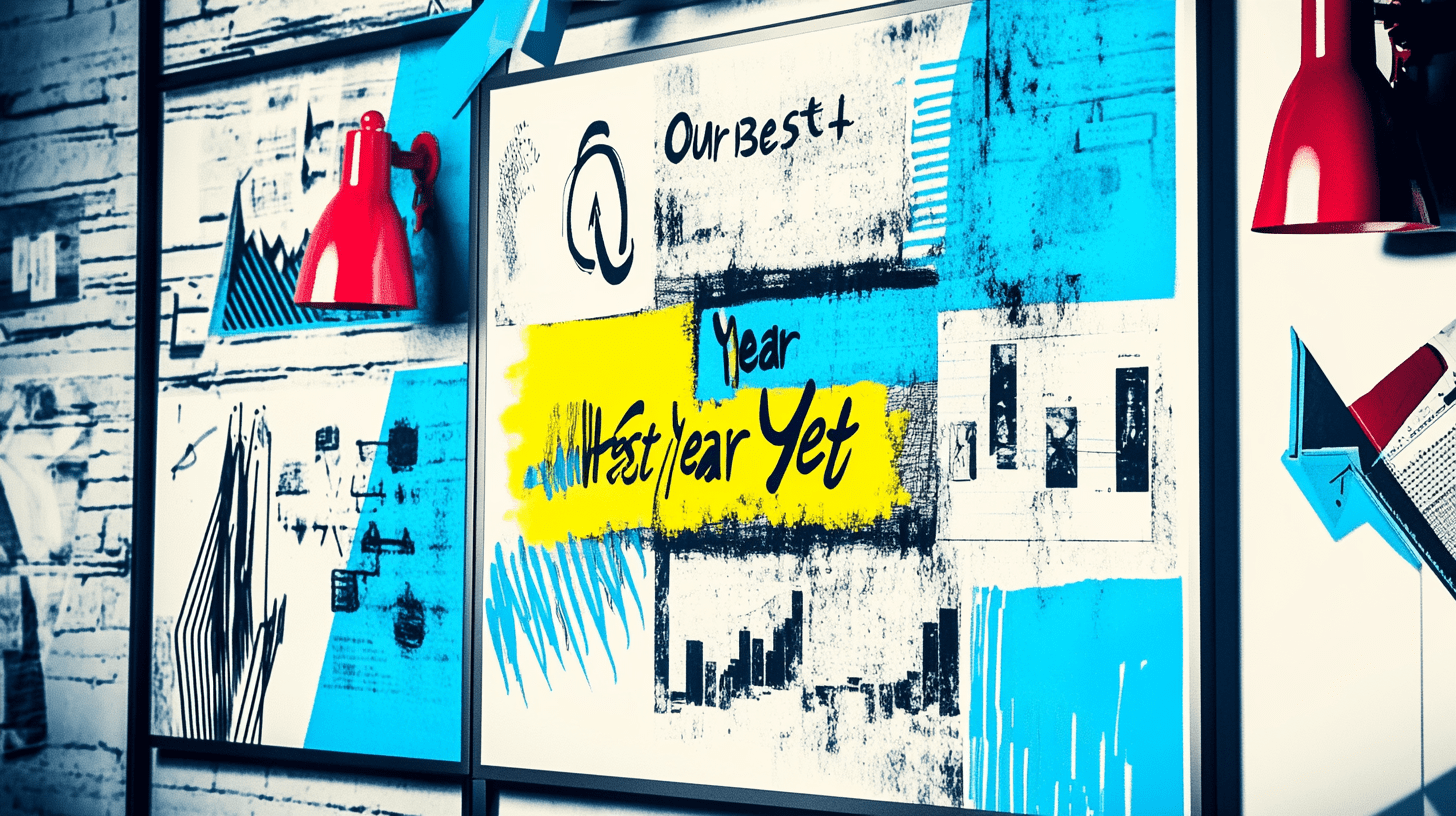What if your company’s success metrics are missing the mark because you’re only counting money? The Balanced Scorecard, introduced in 1992 by Robert Kaplan and David Norton, was created to solve this problem. It balances financial results with customer satisfaction, process efficiency, and team development. This turns strategy into measurable action. Are you using the right balanced scorecard kpi examples to track what truly drives growth?
Businesses often focus on revenue alone, but the Balanced Scorecard key performance indicators reveal a fuller picture. This guide shows how manufacturers track on-time delivery, retailers measure customer retention, and hospitals reduce patient wait times. All through KPIs that align daily actions with long-term goals. With 70+ industry-specific metrics available, the challenge is choosing the right 25 to drive results.
Imagine cutting employee turnover by 30% through targeted training or slashing production defects by optimizing machine downtime. These are the kinds of transformations possible when KPIs are tied to strategic priorities. Even small businesses can start by selecting 3-5 metrics from the financial, customer, process, or people categories to avoid data overload.
Key Takeaways
- Focus on four pillars: financial health, customer needs, operational efficiency, and team capabilities.
- Manufacturing KPIs like defect rates and on-time delivery directly impact profitability.
- Retailers track inventory turnover and foot traffic to boost sales growth.
- Healthcare uses patient wait times and satisfaction scores to improve outcomes.
- Monthly strategy reviews using Red/Amber/Green zones can turn data into action.
From Kaplan and Norton’s original framework to KPI Fire’s 2022 updates, this guide shows how to pick balanced scorecard kpi examples that matter. Ready to see which metrics could double your impact?
Introduction to the Balanced Scorecard
For over two decades, the balanced scorecard has been key in strategic management. It turns vague goals into clear balanced scorecard key performance indicators. It balances financial results with customer satisfaction, operational efficiency, and employee growth. Poor execution is a major reason for strategy failure, but the BSC fixes this by linking metrics to long-term goals.
According to Bain & Co, it’s the fifth most-used management tool globally.
“The Balanced Scorecard isn’t just a tool—it’s a language for turning strategy into numbers.” – Harvard Business Review
What is a Balanced Scorecard?
The BSC focuses on four main areas:
- Financial: Revenue growth, profit margins
- Customer: Satisfaction scores, retention rates
- Internal Processes: Cycle time, error reduction
- Learning & Growth: Training hours, talent retention
Think of a hospital tracking patient satisfaction and cost efficiency. Or a tech firm balancing innovation with profit. Each balanced scorecard metrics example must fit the company’s mission.
Importance of KPIs in Performance Management
Without clear kpi examples for balanced scorecard, teams may aim for the wrong targets. The S.M.A.R.T framework makes KPIs Specific, Measurable, and time-bound. For example, a retailer might aim to “reduce supply chain delays by 20% by Q4.”
Tools like ClearPoint Strategy Software display KPI progress clearly. This avoids the “data overload” problem. When used right, the BSC helps teams work together towards common goals and cuts down on strategy failure.
Financial KPIs for the Balanced Scorecard
Financial KPIs are key to the balanced scorecard examples with kpis. They answer the question: how do we look to shareholders? These metrics turn goals into numbers we can track. Let’s look at three main financial KPIs that link strategy to financial health.
- Revenue Growth Rate: Shows how much revenue goes up each year. A tech company might aim for “10% growth by 2024” to show it’s growing. If growth is slow, it might mean the company isn’t reaching new customers.
- Profit Margin: Looks at how much profit is made after costs. A retail store might want to increase its gross margin to 12%. High margins mean they’re efficient; low ones mean they need to cut costs.
- Return on Investment (ROI): Compares net profit to investment cost. A manufacturing company might use ROI to choose between projects. A goal like “25% ROI in three years” makes sure decisions are smart for the future.
A CEO once said, “Revenue is vanity, profit is sanity, but cash is reality.” This shows why we need to mix financial KPIs with other metrics for a full picture.
Setting SMART goals like “Keep $5M in operating cash flow in FY2024” or “Get 95% of receivables in 60 days” makes big plans real. These balanced scorecard kpis and examples help teams see what success looks like. For example, a service company might link revenue growth with customer happiness to keep quality high.
But, these balanced scorecard metrics examples must be realistic. A 30% profit margin goal in a low-margin field like retail might be too high. Regular checks with financial dashboards keep KPIs useful and doable.
Customer Perspective KPIs
Understanding what customers need is key to lasting success. The customer perspective in balanced scorecard key performance indicators focuses on what matters most to them. These metrics help connect what we do with how happy our customers are, giving us ways to get better.
Customer Satisfaction Score (CSAT)
CSAT checks how happy customers are right after they interact with us. It’s great for finding out what we do well and what we can improve. For example, a tech company might aim to get a 90% CSAT for support calls by Q3 2024. A store might track how happy customers are with their shopping experience.
Tip: Ask more questions after a low CSAT score to find out why.
Net Promoter Score (NPS)
NPS asks one simple question to measure loyalty. A goal might be to increase NPS by 9 points by 2024. Big names like Apple and Amazon use it to find out who loves their brand. But remember, NPS is just a start—add in what people say to really understand their feelings.
Customer Retention Rate
Keeping customers is good for profits. A 5% increase in retention can boost profits by 25-95%. For instance, a goal could be to keep 85% of big clients each year. Airlines and streaming services use loyalty programs to keep customers coming back.
Tip: Look at who might leave to catch problems early.
Internal Process KPIs
Internal processes are key to achieving financial and customer goals. The balanced scorecard key performance indicators in this area help keep things running smoothly. They prevent bottlenecks that can slow us down. Here are the metrics that keep things moving:
Operational Efficiency Ratio
This KPI shows how well resources are turned into results. For example, a factory might track units produced per hour. A tech company might look at support tickets solved per staff member. Setting SMART goals, like reducing waste by 15% in Q4 2024, is a good idea.
Cycle Time
Every second is important. Cycle time measures how long a process takes from start to finish. A bakery might track dough-to-delivery time. A software team might focus on how fast they can develop features. Faster cycles mean quicker delivery of value.
Error Rate
Mistakes cost money and hurt trust. It’s important to track defects, rework, or customer complaints. For example, a hospital might look at lab report errors. A logistics company might track shipment mistakes. Aim to reduce defects by 20% by the end of 2024.
| KPI | Definition | Example | Industry Use Case |
|---|---|---|---|
| Operational Efficiency Ratio | Outputs/Inputs | Widgets produced per labor hour | Manufacturing |
| Cycle Time | Process duration | Order-to delivery in 48 hours | Retail |
| Error Rate | Defects/Total Activities | 0.5% software bugs post-release | Software Development |
“Efficiency without effectiveness is just doing the wrong thing faster.” — Quality Director’s adage
Use a balanced scorecard kpi template to link these metrics to bigger goals. For example, a bakery might use a balanced scorecard examples with kpis to show how faster delivery boosts customer satisfaction. Remember, a 10% improvement in efficiency can increase profit margins by 3–5% each year. Don’t let inefficiency take a break—measure it!
Learning and Growth KPIs
“Happy employees aren’t just nice to have—they’re the engine of innovation.” — Industry analysts note this truth in companies like Google and Salesforce, where employee satisfaction drives customer success. The Learning and Growth pillar of the Balanced Scorecard KPIs and examples ensures your organization’s future readiness. These metrics turn workforce development into a strategic advantage, connecting employee morale to bottom-line results.
Start with the Employee Satisfaction Index, a cornerstone of the Balanced Scorecard metrics examples. This KPI gauges how well you nurture a motivated workforce. High satisfaction correlates with higher customer satisfaction and 3.8% higher shareholder returns, as shown by Harvard Business Review studies. Pulse surveys and exit interviews reveal drivers like career growth opportunities or leadership trustworthiness.
Next, Training Effectiveness measures whether skills development translates to better performance. Use the Kirkpatrick Model’s four levels: reaction (participant feedback), learning (knowledge retention), e.g., post-training quizzes), behavior (application on the job), like reduced error rates), and results (business outcomes like 15% faster onboarding in tech firms). Companies like IBM use LMS data to track real-world skill application, avoiding “training for training’s sake” pitfalls.
Talent Retention Rate highlights systemic issues. For instance, a 20%+ voluntary turnover in engineering teams signals cultural gaps. Pair this KPI with balanced scorecard key performance indicators like training ROI: a manufacturing firm cut retention costs by 30% after linking skill development to promotion pipelines. Public companies like Microsoft tie retention to stock performance, showing how people metrics drive market value.
Remember: these balanced scorecard KPI examples aren’t static. A balanced scorecard kpi template must evolve with trends like remote work adoption or upskilling needs. Track these metrics to ensure your workforce isn’t just competent today—it’s ready to innovate tomorrow.
Industry-Specific Balanced Scorecard KPIs
Effective balanced scorecard examples with KPIs need to be tailored for each industry. Over 80% of companies see better results with this method. Let’s see how healthcare, retail, and manufacturing use balanced scorecard kpi examples to meet their specific goals.
Healthcare KPIs
Hospitals and clinics use metrics to balance patient care and finances. They track:
- Financial: Operating margin, cost per patient
- Customer: Patient satisfaction scores, readmission rates
- Internal Process: Medical error reduction, average length of stay
- Learning: Staff training hours, new procedure adoption
“In healthcare, what gets measured truly determines priorities—our scorecard ensures quality isn’t sidelined for budgets,” says a hospital CMO.
Retail KPIs
Retailers focus on customer experience and supply chain efficiency with their balanced scorecard kpis and examples:
- Financial: Gross margin by product line
- Customer: Net Promoter Scores, in-store footfall trends
- Internal Process: Stockout rates, omnichannel fulfillment speed
- Learning: Employee retention programs, new product launch success
“Our balanced scorecard template keeps us agile in a digital-first world,” shared a Fortune 500 retailer’s VP of Strategy.
Manufacturing KPIs
Manufacturers use balanced scorecard metrics examples to improve production and innovation:
- Financial: Return on manufacturing assets
- Customer: On-time delivery, defect-free orders
- Internal Process: OEE (Overall Equipment Effectiveness), cycle time reductions
- Learning: Safety incidents reduced, continuous improvement initiatives
“A 1% yield improvement saves millions annually—our scorecard makes this measurable,” explains a automotive plant director.
Adapting the balanced scorecard kpi template to fit each industry turns vague goals into clear targets. A tech manufacturer said, “Without industry-specific metrics, you’re just guessing.” Begin by reviewing your current operations to find gaps between goals and measurable results.
Developing Balanced Scorecard KPIs
Creating meaningful balanced scorecard key performance indicators needs careful planning. Start by linking each KPI to a business goal. Use strategy maps to show how actions lead to outcomes. The “so that” test checks if metrics align with goals.
“We track employee training hours so that we improve service quality. This boosts customer retention and drives revenue growth.” This approach keeps metrics focused on the big picture, not just numbers.
Aligning KPIs with Business Goals
- Use balanced scorecard examples with KPIs from sectors like healthcare (patient wait time reductions) or retail (inventory turnover ratios) to benchmark progress.
- Choose metrics that directly affect strategic outcomes. For example, a manufacturing firm might focus on first-time right (FTR) rates to cut rework costs.
- Include both leading indicators like training hours and lagging metrics like profit margin. This balances looking ahead and measuring results.
The Role of Stakeholders in KPI Development
Creating effective KPIs requires teamwork across all levels of an organization. Here’s how different stakeholders contribute:
| Stakeholder | Role |
|---|---|
| Executives | Align KPIs with organizational vision |
| Department Managers | Identify operational feasibility and resource needs |
| Frontline Teams | Provide real-world insights into metric impact and achievability |
| Customers | Inform customer-centric KPIs like net promoter scores |
“The best KPI systems emerge from conversations, not spreadsheets,” notes strategy consultant Dr. Emily Carter of KPI Analytics. “When teams debate metrics, they clarify priorities.”
Using tools like workshops and pilot tests helps ensure KPIs work for everyone. A good balanced scorecard KPI example should show how it helps reach the strategic vision.
Measuring KPI Effectiveness
Tracking KPIs well means using both numbers and feelings. Numbers like revenue growth or customer retention rates give us clear data. But feelings, like what employees or customers say, add depth. A good scorecard should mix both to avoid wrong conclusions.
Qualitative vs. Quantitative Metrics
Numbers are easy to measure and clear. For example, a factory tracking defect rates or a store checking inventory turnover uses facts. But feelings, like what employees think or what customers say, show more. As one expert said:
“Numbers tell you what happened, but qualitative insights explain why.”
Using both gives a full picture.
Setting Benchmark Standards
Benchmarks should match your goals. Here are some types:
- Internal benchmarks: Look at how you’ve done before (like improving cycle time by 15% from last year).
- Competitive benchmarks: See how you stack up against others, like customer satisfaction scores compared to rivals.
- Best-in-class benchmarks: Try to beat the best, like healthcare using error rate standards from manufacturing.
- Theoretical benchmarks: Dream big, like aiming for “zero defects” to push your team.
A good scorecard template should have goals that are tough but reachable. As one expert advises:
“Set benchmarks to stretch your team—not break it.”
Begin with goals like “boost customer NPS by 10%” and add feedback from people. Remember, KPIs are most useful when they mix data and human feelings.
Tracking and Reporting KPIs
Tracking balanced scorecard key performance indicators needs a clear plan. It’s about finding the right balance between updates and insights. Aim for a consistent reporting schedule, like every 12 months, to spot trends.
Monthly or quarterly checks help avoid making decisions based on short-term data. This way, you make choices based on solid, long-term data.
For balanced scorecard examples with kpis, here are some reporting tips:
- Financial metrics (e.g., revenue growth): quarterly
- Customer satisfaction (NPS/CSAT): monthly
- Operational efficiency (cycle time): weekly
- Employee training progress: bi-annually
Tools like KPI Fire make tracking easier. It automates data into a balanced scorecard kpi template. Its dashboards cover all four areas (financial, customer, internal, learning) without needing spreadsheets.
Platforms like DashThis work with 40+ apps. They turn data into useful insights. Even examples of kpis in balanced scorecard become clearer with tools that spot unusual trends.
“The right reporting frequency answers the question: ‘How quickly would we act on this data?'”
Tools are just part of the solution. Use a balanced scorecard kpi template that fits your goals. A 2023 study showed companies using automated tracking saved 40% on reporting time. This lets teams focus on strategy, not just data.
Challenges in Implementing KPIs
Even with great balanced scorecard kpi examples and balanced scorecard metrics examples, companies often struggle. They might track the wrong metrics, set goals that are too high, or deal with data that’s hard to understand.
| Challenge | Solution |
|---|---|
| Data fragmentation | Adopt centralized software to unify kpi examples for balanced scorecard tracking |
| Unrealistic targets | Use SMART criteria (Specific, Measurable, Achievable, Relevant, Time-bound) |
| Resistance to change | Frame KPIs as tools for growth, not punishment |
A balanced scorecard kpis and examples plan can fail if teams focus on the wrong metrics. For example, a retail chain used Excel for hours but missed important insights. Using software can help collect data automatically, reducing mistakes and giving insights in real-time.
- SMART targets in action: Replace a 200% holiday foot traffic goal (unrealistic) with a 10% increase, backed by historical data.
- Data governance: Regular audits reduce inconsistencies, like duplicate entries or outdated numbers.
“Measurement without purpose is just noise,” warns performance strategist Jane Doe. “KPIs must serve strategy, not become its master.”
Using cloud-based platforms like SAP or Microsoft Power BI can help. It turns scattered spreadsheets into useful dashboards. By matching tools with goals, companies can avoid the “Excel trap” of old files and conflicting reports. It’s like tuning an orchestra: every department needs to play from the same sheet music for harmony.
Success Stories Using Balanced Scorecard KPIs
Real-world balanced scorecard examples with kpis show their strength. Over 77% of companies see real results, with 71% updating their balanced scorecard key performance indicators every year. Let’s look at how two leaders turned strategies into success.
Case Study: A Leading Tech Innovator
A global tech company was facing tough competition. They used a balanced scorecard kpi template to track important metrics across four areas:
| Perspective | KPI Examples |
|---|---|
| Financial | Revenue Growth Rate, Profit Margin, Recurring Revenue % |
| Customer | Net Promoter Score (NPS), 90%+ target), Cross-Sell Success Rate |
| Internal | Innovation Cycle Time (reduced by 30%), Defect Rate |
| Learning | Employee Upskilling Hours, Idea-to-Market Speed |
They saw a 22% increase in revenue in just two years. Their CMO said, “Our examples of kpis in balanced scorecard did more than track progress. They changed how we make decisions.”
Case Study: Retail Reinvention
A big retailer changed by using a balanced scorecard kpi template for both in-store and online teams. Key KPIs were:
- Financial: Omnichannel Profit Margin, Inventory Turnover
- Customer: Channel-Specific CSAT, Cross-Channel Purchase Frequency
- Internal: Order Fulfillment Time, Stock Accuracy
- Learning: Digital Literacy Training Completion, Idea Sharing Platforms
“The Balanced Scorecard became our common language. Teams stopped debating metrics—they started solving problems.” – Retail CTO
They cut costs by 18% and boosted customer retention by 25%. Their secret? Regular KPI reviews and sharing data across departments.
These stories show how balanced scorecard examples with kpis can turn goals into plans. Even small changes, like tracking cycle times or training, can lead to big improvements. Start by checking your current KPIs. Are they telling a full story? If not, it’s time to create a scorecard that matches your team’s effort.
Conclusion: The Future of Balanced Scorecards in Business
The Balanced Scorecard, created by Kaplan and Norton, is key to strategic management. It stays relevant as businesses face new challenges. The framework’s four views—financial, customer, internal processes, and learning and growth—help align KPIs with goals.
Today, balanced scorecard examples with KPIs include ESG metrics and real-time analytics. These help tackle issues like remote work and customer satisfaction.
Trends in Performance Metrics
Businesses are now focusing on balanced scorecard kpi examples that mix predictive analytics with old metrics. They use AI-powered dashboards for quick updates, not just quarterly reports. Tools like BSC Designer or QuickScore help track KPIs like cycle time and employee productivity.
Predictive analytics turn past data into useful insights. This helps make better decisions.
Adapting to Changing Business Environments
Adapting means updating kpi examples for balanced scorecard to meet new needs. Remote work and ESG goals are now key. Tools like KPI Fire make tracking easier, saving time.
Even with costs for ERP systems, the benefits in strategy are worth it. A CEO said, “The main questions are: Are we adding value for customers and employees while keeping finances healthy?”




